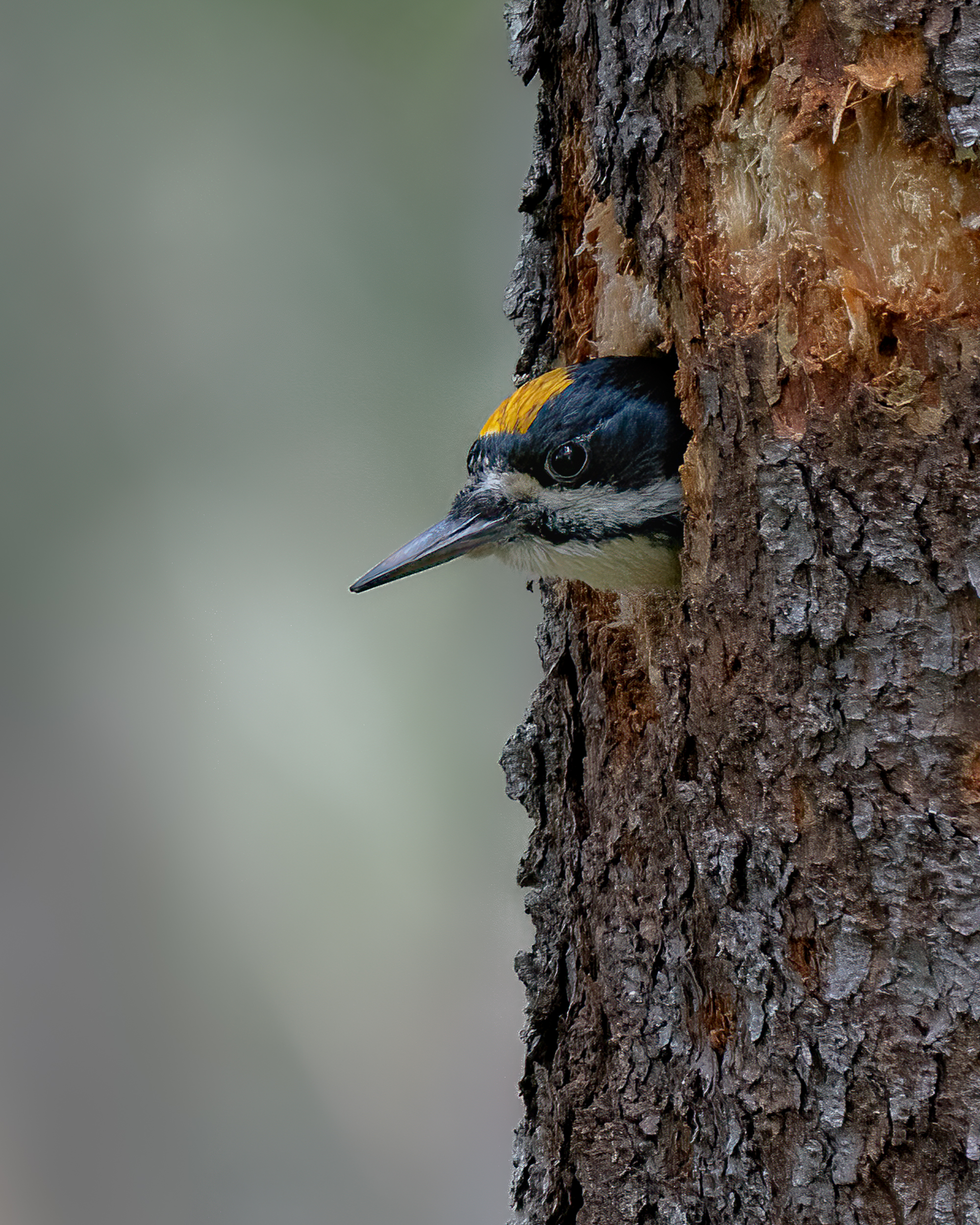Soon after a fire rips through an area of the boreal forest, wood boring beetles move in to lay their eggs in the charred trees. Once the eggs hatch, black-backed woodpeckers enter to feast on the wealth of larvae. Since the leaf cover is destroyed by the fire, the woodpeckers developed dark feathers allow them to blend into the blackened trees. This keeps them hidden from predators like raptors.
Black-backed woodpeckers prefer to excavate holes in severely burned trees that are found near living forest patches. However, as climate change continues, fires are becoming hotter. This creates a more uniform burn which leaves black-backed woodpeckers without living forest patches to nest near.
This black-backed woodpecker was found nesting while surveying up in Northern Ontario for the Ontario Breeding Bird Atlas. Not only is this observation important for understanding the breeding biology of these woodpeckers, it also has vital implications for the conservation of this species. Further, the presence of black-backed woodpeckers is a good indicator for general ecosystem health!
